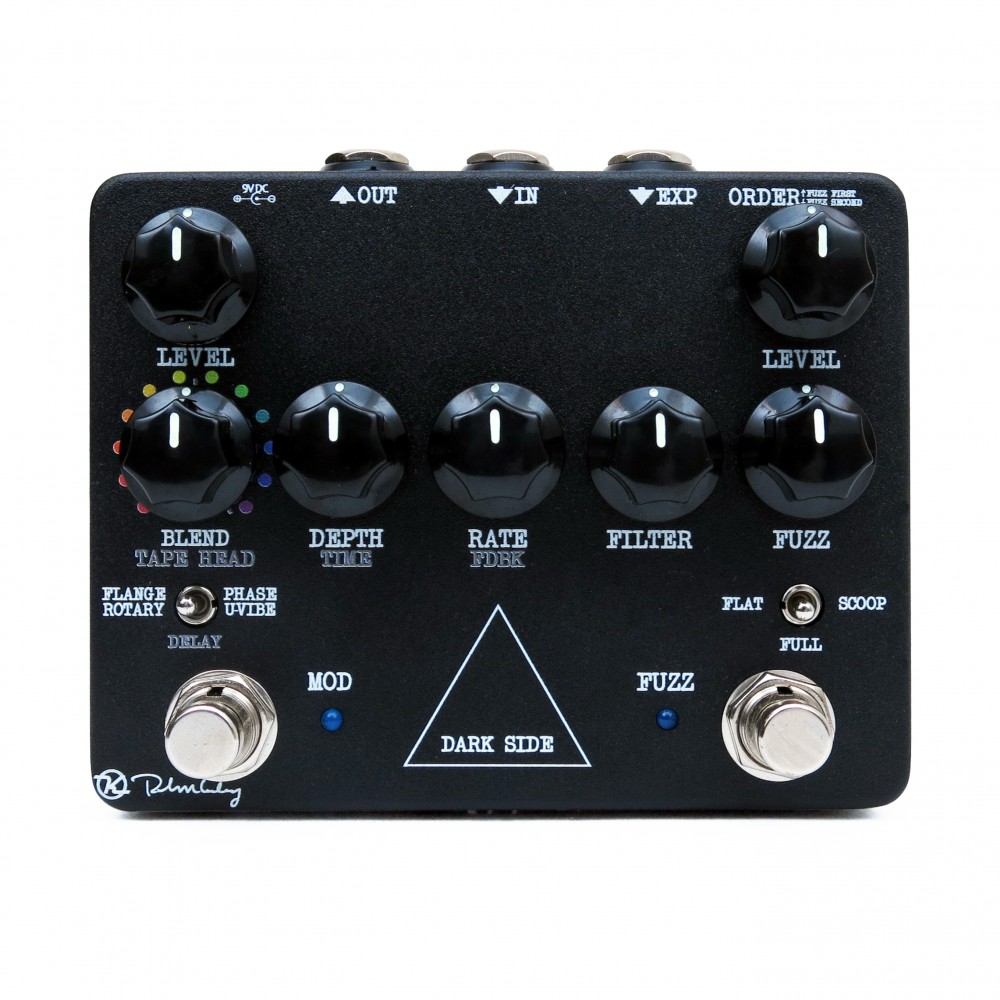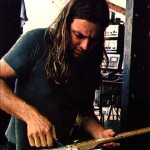 The new addition to the Keeley line is an homage to the mid-70s David Gilmour sound, resting comfortably in the classic Dark Side to Animals (even The Wall) period of the Pink Floyd guitarist’s work. As with Keeley’s recent Jimi Hendrix-inspired Monterey pedal, the Dark Side sports beautiful workmanship, low noise, a great layout and a cornucopia of features. There’s a lot to cover, so I’ll plug in a stock early 70s Strat (I had to for this pedal!) to a clean Fender-style amp and put the Dark Side into play.
The new addition to the Keeley line is an homage to the mid-70s David Gilmour sound, resting comfortably in the classic Dark Side to Animals (even The Wall) period of the Pink Floyd guitarist’s work. As with Keeley’s recent Jimi Hendrix-inspired Monterey pedal, the Dark Side sports beautiful workmanship, low noise, a great layout and a cornucopia of features. There’s a lot to cover, so I’ll plug in a stock early 70s Strat (I had to for this pedal!) to a clean Fender-style amp and put the Dark Side into play.
Continue reading
Tag Archives: david gilmour
Legendary Artist Profile: David Gilmour
David Gilmour holds a special place in the heart of many guitarists, let alone among the fans of Pink Floyd’s music. By sheer virtue of his expressive playing and songwriting, he should be mentioned in the same breath as Clapton, Page, Townshend or Beck. While he may not be the technical virtuoso, he has clearly defined his own sound and style, one that is unique and beautiful. From his early forays into psychedelia to his solo albums, numerous guest appearances and the entire Pink Floyd canon, his ability to bring his own voice to the music stands as a remarkable achievement. With the recent release of a live solo DVD and continuing interest in the Floyd catalog, the Gilmour phenomenon continues to delight guitarists and music fans alike.
 Far from being a complete dissertation of Gilmour’s sound and style, this article strives to paint a broad picture of the tolls used and offer some insight into the David Gilmour phenomenon. As noted by The Wall producer/collaborator Bob Ezrin, “…with Gilmour, equipment is secondary to touch. You can give him a ukulele and he’ll make it sound like a Stradivarius. He’s truly got the best set of hands with which I have ever worked.”
Far from being a complete dissertation of Gilmour’s sound and style, this article strives to paint a broad picture of the tolls used and offer some insight into the David Gilmour phenomenon. As noted by The Wall producer/collaborator Bob Ezrin, “…with Gilmour, equipment is secondary to touch. You can give him a ukulele and he’ll make it sound like a Stradivarius. He’s truly got the best set of hands with which I have ever worked.”
Continue reading
Fuzz Feast Part 1 – An Examination of Vintage Fuzz Boxes
I have a confession. As a guitarist for well over 25 years, I had always been an “anti-fuzz” person. In fact, I can honestly say I hated and despised the sound of fuzzes that I had heard. I couldn’t understand the point of purposefully making a guitar sound as atrocious and “lo-fi” as possible in mind. A fuzz tone after all, sounded nothing like an electric guitar should.
During this period of time, my search for the epitome of rock tone had to do with capturing rock guitar tones from the likes of players like Angus Young of AC/DC and of course Edward Van Halen. In my mind, any tone that deviated from those was simply bad tone, or at best, “sub-par.”
Continue reading